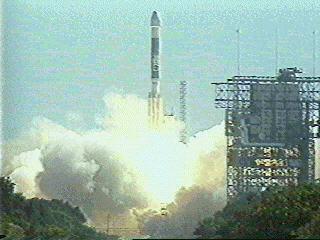Launch of the Mars Global Surveyor spacecraft. MGS was launched on November 7, 1996. MGS arrived at Mars on September 11, 1997.
Click on image for full size
Courtesy of NASA.
Instruments of the Mars Global Surveyor Mission
Mars Global Surveyor (MGS) is conducting
mapping operations at Mars more than 30
years after America's first reconnaissance
missions reached the mysterious red planet. Here are some of the instruments carried onboard. Many of these instruments were inherited from the Mars Observer mission. These instruments are designed to study the weather and surface of Mars:
- A camera to produce daily weather images
of Mars similar to weather photographs of the
Earth shown on the nightly news.
- A laser altimeter to bounce beams of light
off of the surface to measure the heights of
mountains and depths of valleys.
- A thermal emission spectrometer to scan for
heat emitted from Mars to study the atmosphere
and to map the mineral composition of the
surface. Surface temperature maps are being created daily.
- A magnetometer to study the magnetic
properties of Mars to gain insight into the
interior of the planet. An important new result from the mission is the definite confirmation of the presence of a Martian magnetic field.
An analysis of radio signals sent to Earth from
Surveyor will reveal the precise shape of the
planet and structure of the atmosphere. New findings about the shape of the atmosphere already had an effect on determining the aero-braking process.
You might also be interested in:
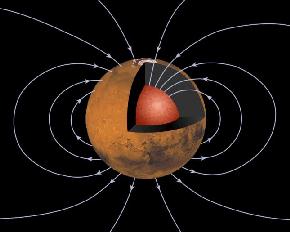
An important new result from the Mars Global Surveyor (MGS) mission is the definite confirmation of the presence of a magnetosphere around Mars. Previous missions made inconclusive measurements of the
...more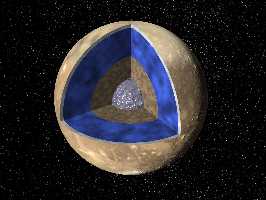
You may wonder how it is that scientists know what the inside of a planet is like. The interior of a moon or planet can be closely determined from spacecraft navigation data when a spacecraft passes by
...more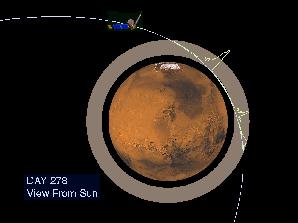
On September 12, 1997, the Mars Global Surveyor successfully entered a highly elliptical orbit around Mars. To get into the near-circular, near-polar, low-altitude orbit necessary to map the surface of
...more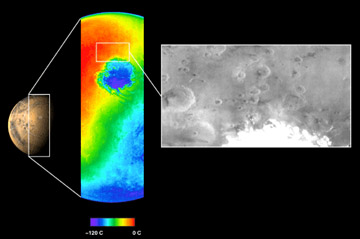
The Mars Odyssey was launched April 7, 2001, from Cape Canaveral Air Force Station in Florida. After a six-month, 285 million-mile journey, the Odyssey arrived at Mars on October 24, 2001 (02:30 Universal
...more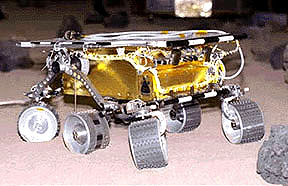
The Mars 2005 mission is still in the planning stages. It is set to launch in the year 2005.
...more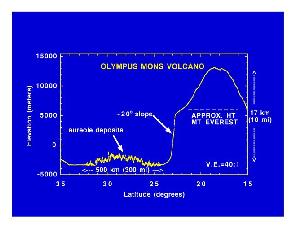
Mars Global Surveyor carries an instrument which measures the altitudes of things. The instrument is called an altimeter, or "altitude-meter". The graph to the left shows the results returned from Mars
...more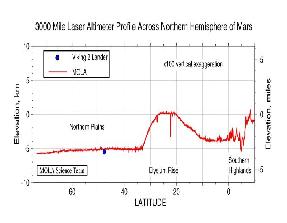
Mars Global Surveyor carries an instrument which measures the altitudes of things. The instrument is called an altimeter, or "altitude-meter". The graph to the left shows Mars Global Surveyor's measurement
...more


